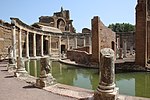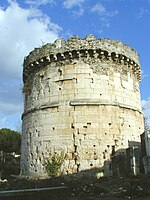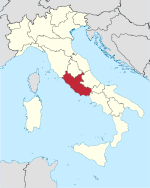Roman Catholic Diocese of Tivoli
Dioceses established in the 2nd centuryIncomplete lists from October 2016Roman Catholic dioceses in Lazio

The Diocese of Tivoli (Latin: Dioecesis Tiburtina) is a Latin Church ecclesiastical territory or diocese of the Catholic Church in Latium, Italy, which has existed since the 2nd century. In 2002 territory was added to it from the Territorial Abbey of Subiaco. The diocese is immediately exempt to the Holy See.
Excerpt from the Wikipedia article Roman Catholic Diocese of Tivoli (License: CC BY-SA 3.0, Authors, Images).Roman Catholic Diocese of Tivoli
Strada Colle Ripoli,
Geographical coordinates (GPS) Address Phone number Website Nearby Places Show on map
Geographical coordinates (GPS)
| Latitude | Longitude |
|---|---|
| N 41.95 ° | E 12.8 ° |
Address
Medicus Hotel
Strada Colle Ripoli 12
00019
Lazio, Italy
Open on Google Maps









